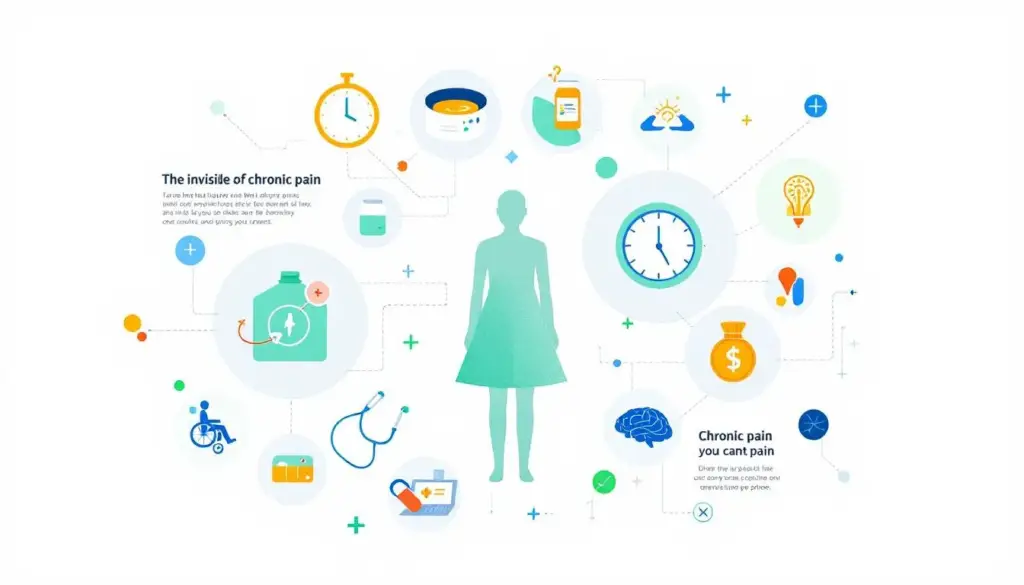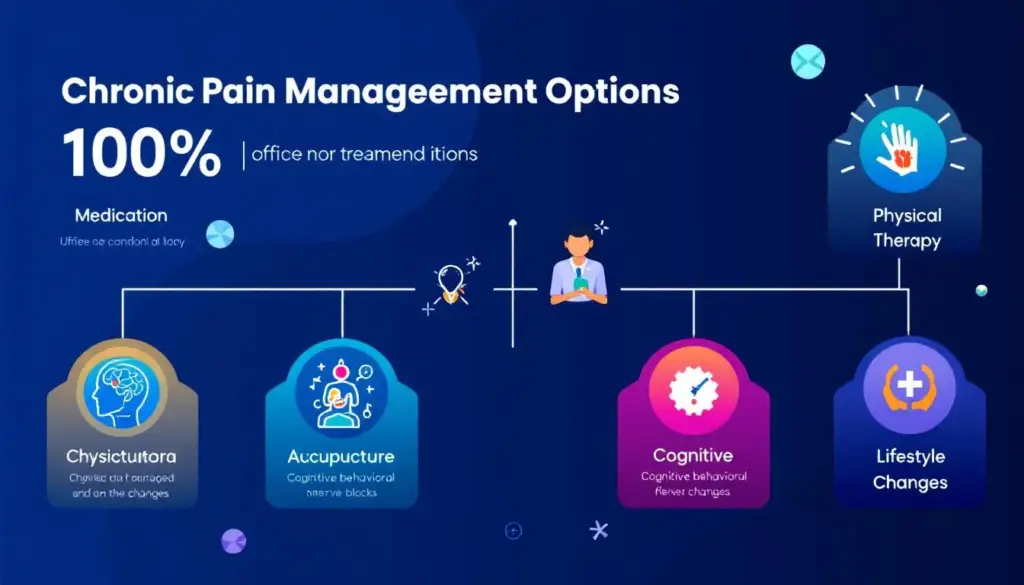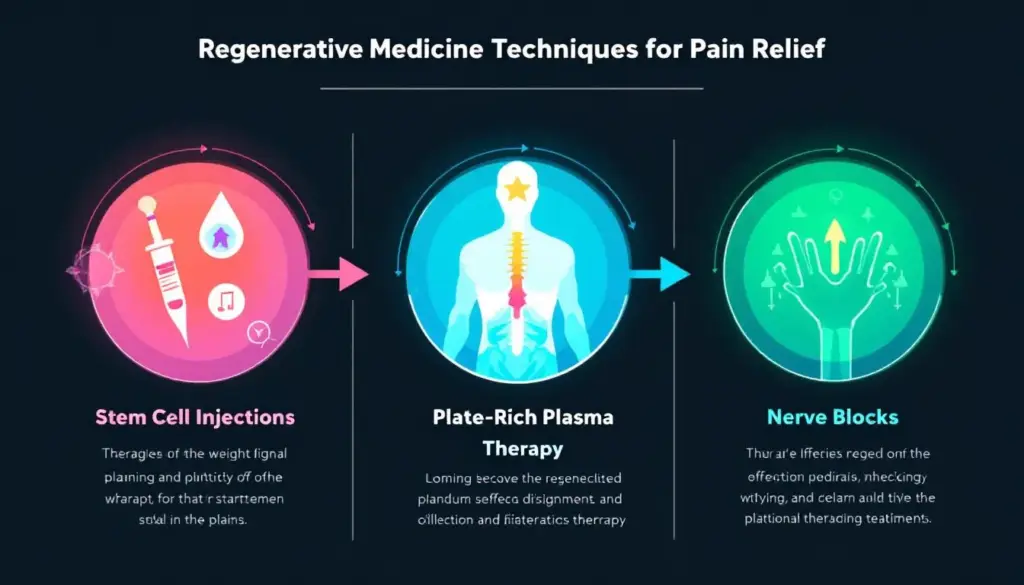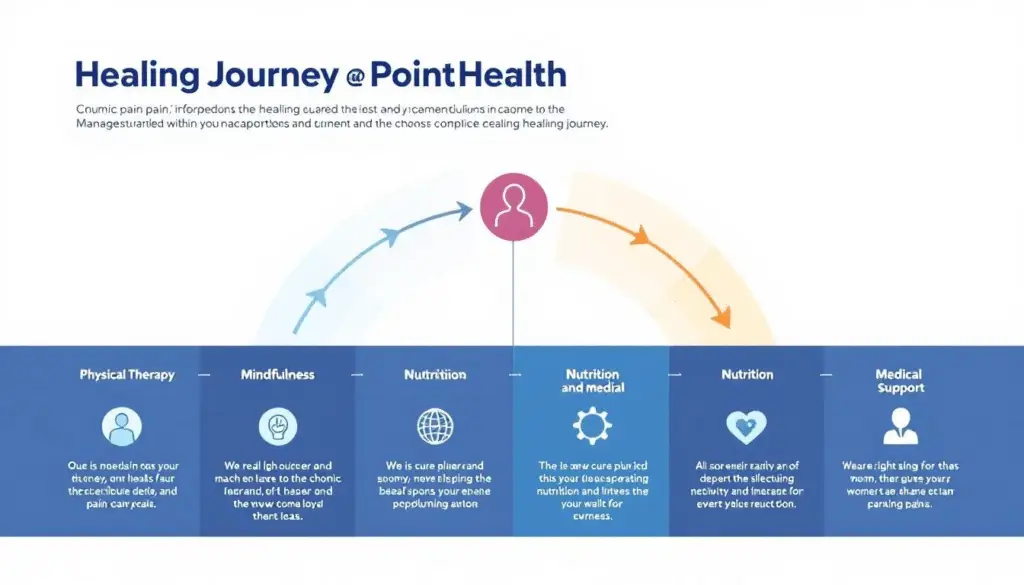Chronic pain affects millions of people and can severely impact daily life. Finding effective treatment of chronic pain is crucial for improving quality of life. In this article, we will explore various treatment options, including traditional methods and innovative approaches like stem cell injection therapy. You’ll learn about the causes of chronic pain, its different forms, and how each can be managed effectively.
Key Takeaways
Chronic pain affects approximately 50 million adults in the U.S. and can stem from various sources, necessitating personalized treatment approaches.
Stem cell injection therapy at PointHealth represents a significant advancement in regenerative medicine, offering targeted relief by addressing the root causes of pain and promoting tissue regeneration.
A holistic pain management approach at PointHealth integrates lifestyle changes, mental health support, and advanced monitoring to enhance treatment effectiveness and improve overall quality of life.
1. Understanding Chronic Pain

Chronic pain is defined as pain that persists for more than three months or beyond the expected period of healing. Unlike acute pain, which serves as a warning signal for injury or illness, chronic pain ranges is a complex condition that continues to affect people with chronic pain long after the initial cause has been addressed. In the United States alone, acute and chronic pain affects approximately 50 million adults, making it a widespread and significant health issue.
The symptoms of chronic pain can vary widely, but commonly include burning sensations, aching, and stiffness. The complexity of chronic pain lies not only in its physical manifestations but also in its emotional and psychological toll. Many individuals suffering from chronic pain experience debilitating pain, anxiety, depression, and a sense of isolation, which can further exacerbate their condition. This multifaceted nature of chronic pain underscores the need for personalized care and comprehensive pain management strategies.
Recognizing the various forms of chronic pain helps in crafting effective treatment plans. Chronic pain can stem from a variety of sources, including nerve damage, musculoskeletal issues, inflammatory responses, and more. Each type requires a specific approach to pain management, highlighting the importance of consulting with pain management specialists who can tailor treatments to individual needs.
We’ll explore the common types and causes of chronic pain, its daily impact on sufferers, and the traditional and emerging treatment options available. This foundational knowledge will set the stage for discussing the innovative treatments offered at PointHealth, including the promising field of regenerative medicine.
2. Common Types of Chronic Pain
Chronic pain can manifest in various forms, each with its unique characteristics and treatment challenges. Recognizing these distinctions is essential for effective pain management.
Neuropathic pain arises from damage to the peripheral or central nervous system and is often described as sharp, shooting, or burning pain. Conditions like diabetic neuropathy and multiple sclerosis are common culprits. This type of pain can be particularly challenging to treat due to its complex nature and the involvement of nerve damage.
Musculoskeletal pain, on the other hand, is related to injuries or diseases affecting muscles, ligaments, tendons, and bones. Common examples include arthritis, chronic back pain, and fibromyalgia. This type of pain is often characterized by stiffness, aching, and a reduced range of motion, significantly impacting one’s ability to perform daily tasks, including chronic musculoskeletal pain.
Inflammatory pain is usually the result of an autoimmune response, where the body’s immune system mistakenly attacks its tissues. Rheumatoid arthritis is a prime example, presenting symptoms like swelling, redness, and warmth in the affected joints. This type of pain can be persistent and debilitating, requiring a combination of anti-inflammatory medications and other treatments to manage effectively.
Lastly, nociceptive pain results from tissue injury and includes visceral pain (from internal organs) and mechanical pain (from structural damage). Examples include stomach pain from gastrointestinal issues or joint pain from osteoarthritis. Effective pain management techniques for these types of pain often involve a combination of medications, physical therapy, and sometimes surgical interventions.
3. Causes of Chronic Pain
Chronic pain can arise from a multitude of causes, making it essential to identify the root source for effective treatment. Past injuries or trauma are common causes of chronic pain. Even after the initial injury has healed, pain can persist due to underlying damage that has not fully recovered. This is often seen in conditions like chronic low back pain, where an old injury continues to cause discomfort.
Chronic conditions such as arthritis, fibromyalgia, and cancer are significant contributors to chronic pain syndrome. These conditions involve ongoing inflammation and tissue damage, leading to persistent pain that can be challenging to manage. Additionally, central sensitization, a condition where the central nervous system becomes overly reactive, can amplify pain signals and contribute to chronic pain.
Lifestyle factors also play a crucial role in the development and persistence of chronic pain. Obesity, smoking, and a lack of physical activity can exacerbate pain conditions and hinder recovery. Addressing these lifestyle factors through targeted interventions can significantly improve pain management outcomes.
4. The Daily Impact of Chronic Pain
The daily impact of chronic pain extends far beyond physical discomfort, influencing various aspects of one’s life:
Disrupts work schedules, social activities, and daily routines
Causes financial strain and reduces quality of life
Leads to mental health issues like anxiety, depression, and insomnia, including pain disorders.
These conditions can create a vicious cycle, where the emotional toll of chronic pain exacerbates the physical symptoms, and vice versa.
Social withdrawal is another common consequence of chronic pain and generalized anxiety disorder. Individuals may isolate themselves to avoid the stress of social interactions or the embarrassment of their condition. This isolation can lead to a loss of self-esteem and a diminished sense of self-worth, further impacting mental health.
The long-term consequences of chronic pain can be severe, increasing the risk of disability and dependency on others. It’s crucial to address both the physical and emotional aspects of chronic pain to provide comprehensive care and support. Mental and emotional support, including therapy and support groups, plays a vital role in managing chronic pain effectively.
5. Traditional and Multidisciplinary Treatment Options

Chronic pain management has evolved with traditional and multidisciplinary approaches to tackle the condition’s complexity. Medications and other medications often serve as the primary treatment for chronic pain, frequently being the first choice for management. Nonsteroidal anti-inflammatory drugs (NSAIDs), acetaminophen, and COX-2 inhibitors are commonly used to reduce inflammation and alleviate pain reduction and pain control. However, these medications might offer only temporary relief and come with potential side effects like gastrointestinal issues and liver damage, especially when considering pain medicine for treating pain to decrease pain. The treatment of chronic pain may require additional strategies beyond medication.
Physical therapy and massage therapy are integral components of a multidisciplinary approach to pain management. These therapies help improve mobility, strengthen muscles, and reduce pain through targeted exercises and manual manipulation. Physical therapists provide essential support in this process. Behavioral health support, including cognitive-behavioral therapy (CBT) and support groups, also addresses the psychological aspects of chronic pain.
Interventional treatments, including nerve blocks, transcutaneous electrical nerve stimulation (TENS), and epidural steroid injections, offer more targeted pain relief. These treatments also have limitations, often offering only temporary relief and carrying risks of side effects or complications.
6. Regenerative Medicine: A New Frontier in Pain Relief

Regenerative medicine is revolutionizing chronic pain management by focusing on healing rather than just symptom relief. Regenerative medicine encompasses a range of treatments designed to repair or replace damaged tissues and organs. This field is gaining traction due to its potential for long-term healing and reduced reliance on medications. Unlike traditional treatments that mask symptoms, regenerative medicine targets the root causes of pain.
Regenerative medicine’s popularity stems from its ability to offer long-term pain relief. These treatments promote the body’s natural healing processes, leading to more sustainable outcomes than conventional methods. This long-term healing focus appeals particularly to those with chronic pain who haven’t found relief through traditional treatments.
The potential of regenerative medicine lies in its ability to harness the body’s natural healing mechanisms to repair damaged tissues. This approach not only alleviates pain but also improves overall function and quality of life, making it a promising option for many suffering from chronic pain.
7. Stem Cell Injection Therapy at PointHealth
Stem cell injection therapy is a significant advancement in regenerative medicine, and PointHealth is at the forefront of offering this innovative treatment. Stem cell injections utilize the body’s natural healing cells to regenerate damaged tissues and promote healing. The process involves:
Deriving stem cells from umbilical cord tissue or autologous sources like the patient’s own bone marrow or adipose tissue.
Collecting the stem cells.
Injecting the stem cells directly into the affected joints, spinal cord, or other damaged areas to stimulate repair and regeneration.
PointHealth ensures that patients receive the highest quality care throughout the entire process. From the initial consultation to the post-treatment follow-ups, our team of specialists is dedicated to guiding you every step of the way. This comprehensive approach ensures that you receive the best possible outcomes from your stem cell therapy.
8. What to Expect During and After Stem Cell Therapy
Knowing what to expect during and after stem cell therapy can help alleviate concerns and prepare you for the journey ahead. The process includes:
An initial consultation and thorough diagnostic evaluation to determine your suitability for stem cell therapy.
Once approved, the procedure is performed in-office and typically requires minimal downtime.
The actual injection process is relatively quick.
Most patients can return to their regular activities shortly after the treatment.
Healing from stem cell therapy is gradual, with progressive improvement observed over weeks to months. Follow-up care is crucial to monitor your progress and ensure optimal outcomes. PointHealth integrates follow-up care with other pain management techniques to support your recovery and maximize the therapy’s benefits.
Patients frequently report decreased pain, improved mobility, and restored function from stem cell therapy. These positive outcomes highlight the potential of stem cell therapy to provide long-lasting relief and improve quality of life.
9. Comparing Stem Cell Therapy to Traditional Treatments
When comparing stem cell therapy to traditional treatments, several key differences emerge, making stem cell therapy an attractive option for many.
Traditional pain relief methods like NSAIDs and acetaminophen typically offer short-term relief and don’t address the root cause of the pain. These medications also carry risks of side effects, including gastrointestinal and liver issues. Opioids, while effective for short-term adequate pain relief, come with a high risk of addiction and other serious side effects. Additionally, exploring the body’s natural painkillers and pain relievers can help to relieve pain and provide alternative options for managing discomfort.
Interventional treatments such as nerve blocks and epidural steroid injections provide longer-lasting relief but don’t target the underlying causes of pain. These procedures can offer moderate pain relief but often need to be repeated and come with their own set of risks and complications.
Stem cell therapy, in contrast, aims to provide long-term relief by addressing the root cause of pain and promoting tissue regeneration. The minimally invasive nature of the procedure and low risk of side effects make it a compelling alternative to traditional treatments. This approach not only reduces pain but also improves overall function and quality of life.
10. Is Stem Cell Therapy Right for You?
Deciding if stem cell therapy is right for you involves considering the nature and severity of your pain, previous treatment outcomes, and overall health. Ideal candidates for stem cell therapy often include those suffering from chronic joint or muscle pain who haven’t found relief through traditional treatments. Conditions such as osteoarthritis, chronic back pain, and tendon injuries are often successfully treated with stem cell injections.
Consulting with a pain management specialist is important to assess your specific situation and determine the best course of action. Certain contraindications must be considered. Individuals with severe infections, certain types of cancers, or specific immune disorders may not be suitable for stem cell therapy. It’s crucial to undergo a thorough medical evaluation to rule out any potential risks before proceeding with treatment.
For optimal outcomes, stem cell therapy should be part of a holistic pain management plan that includes rehabilitation, lifestyle modifications, and ongoing medical oversight. Combining stem cell injections with physical therapy, nutrition coaching, and other supportive therapies enhances treatment effectiveness and promotes long-term healing.
11. Building a Holistic Plan at PointHealth
PointHealth believes in a holistic approach to pain management, integrating various therapies and lifestyle changes to support your recovery and overall well-being. Our comprehensive pain management plans include:
Lifestyle coaching that focuses on nutrition, movement, and sleep
Emphasis on proper nutrition and regular physical activity as essential for maintaining health and managing pain
Personalized guidance from our experts to help you make sustainable changes that support your health and recovery.
Mental health integration is another critical component of our holistic approach. Chronic pain often leads to mental health issues such as anxiety and depression, which can hinder recovery. Incorporating mental health support, including therapy and counseling, addresses the emotional aspects of chronic pain and promotes overall well-being to treat depression.
Continuous pain tracking and data-driven adjustments are key to ensuring your treatment plan’s effectiveness. At PointHealth, we use advanced monitoring tools to track your progress and make necessary adjustments to your treatment. Supportive therapies like massage, transcutaneous electrical nerve stimulation (TENS), relaxation techniques, and behavioral therapy are integrated into your plan to enhance pain relief and improve quality of life.
12. Risks, Safety & Monitoring
Safety and monitoring are paramount at PointHealth, especially for innovative treatments like stem cell therapy. One significant advantage of stem cell therapy is that it generally has fewer side effects compared to traditional pain medications like opioids or steroids. There is no risk of addiction, a considerable concern with opioid therapy. This makes stem cell therapy a safer alternative for long-term pain management.
Despite its benefits, monitoring for potential complications like infection or inflammation following the trigger point injections is essential. At PointHealth, we take great care to minimize these risks by adhering to strict procedural protocols and providing thorough post-treatment care.
Tracking outcomes over time through regular follow-ups ensures the treatment’s effectiveness and allows necessary adjustments to your pain management plan. This continuous monitoring helps us achieve the best possible results for our patients.
13. Start Your Healing at PointHealth

Chronic pain doesn’t have to define your life. At PointHealth, we offer advanced regenerative therapies, including stem cell injection therapy, that may be the breakthrough you’ve been looking for.
Schedule a consultation with our expert pain clinics team to take the first step towards reclaiming your life from chronic pain. Our comprehensive approach, combined with innovative treatments, ensures that you receive the best possible care tailored to your unique needs.
Summary
Chronic pain is a pervasive and complex condition that affects millions of people, impacting their physical, emotional, and social well-being. Traditional treatment options, while helpful, often provide only temporary relief and come with significant limitations and side effects.
Regenerative medicine, particularly stem cell injection therapy, offers a promising alternative that focuses on long-term healing and addressing the root causes of pain. At PointHealth, we are dedicated to providing cutting-edge treatments, personalized care, and a holistic approach to help you manage and alleviate chronic pain effectively.
If you’re tired of living with chronic pain and seeking a solution that offers lasting relief, consider exploring stem cell therapy at PointHealth. Our expert team is here to guide you through every step of your journey to recovery, helping you regain control of your life and enjoy a pain-free future.
Frequently Asked Questions
What is chronic pain, and how is it different from acute pain?
Chronic pain is defined as pain that lasts for over three months, differing from acute pain, which is a temporary sensation signaling injury or illness. Understanding this distinction is crucial for appropriate treatment and management strategies.
What types of chronic pain can stem cell therapy treat?
Stem cell therapy can effectively treat various types of chronic pain, including joint pain, muscle pain, arthritis pain, and chronic low back pain, particularly in cases resistant to traditional treatments.
What should I expect during and after stem cell therapy?
During stem cell therapy, you should expect an initial consultation followed by an in-office injection with minimal downtime. After the procedure, healing occurs gradually over weeks to months, and follow-up care is crucial for achieving the best results.
Are there any risks associated with stem cell therapy?
While stem cell therapy tends to have fewer side effects than traditional treatments, there are still risks involved, including the possibility of infection or inflammation, which warrant careful monitoring.
How can I start my treatment at PointHealth?
To initiate your treatment at PointHealth, please schedule a consultation with our expert pain team for a thorough assessment, which will allow us to create a tailored pain management plan for you.

